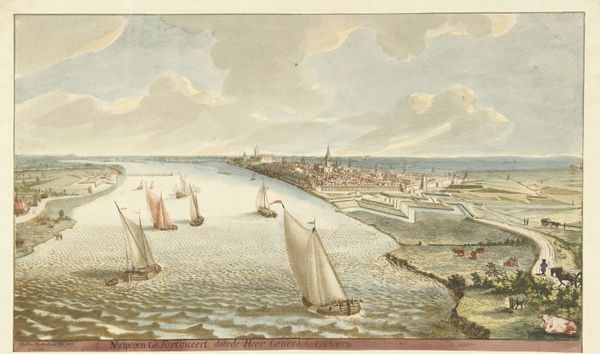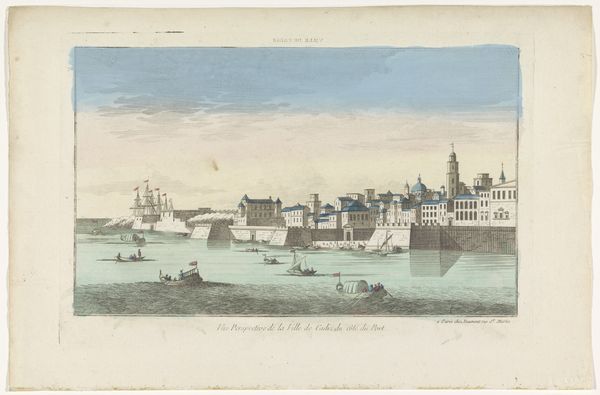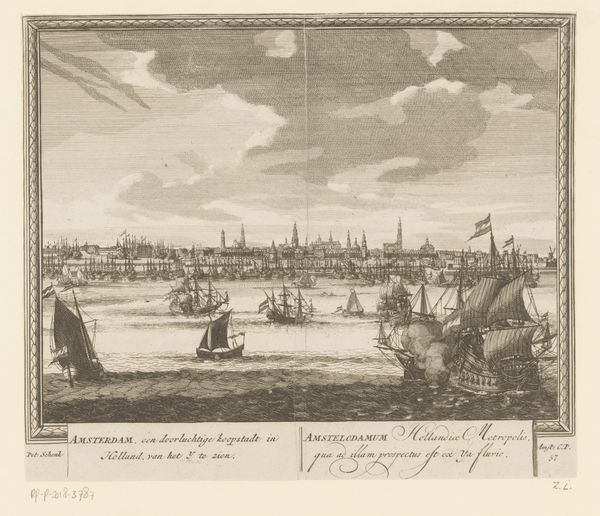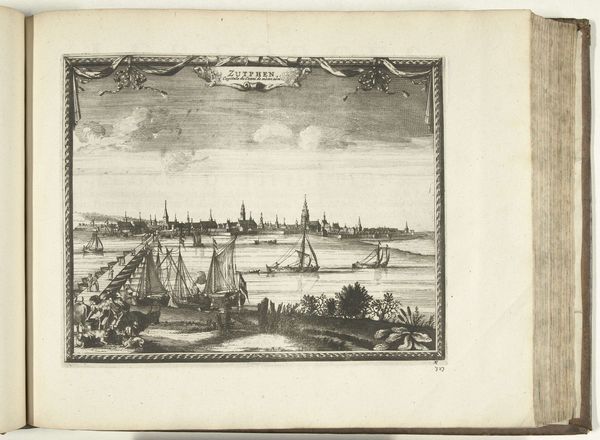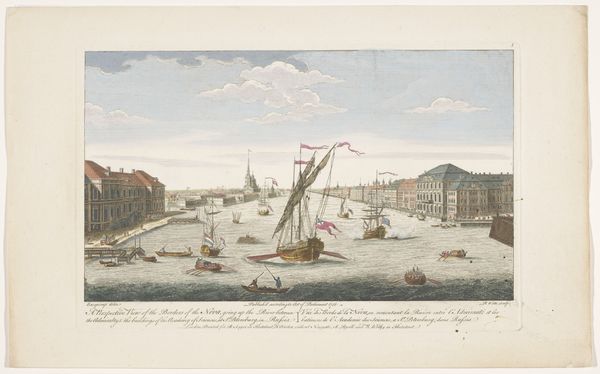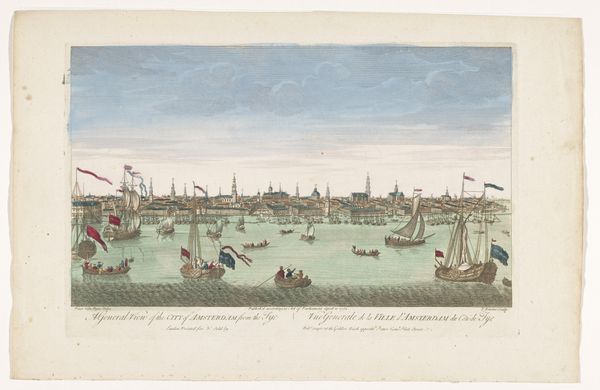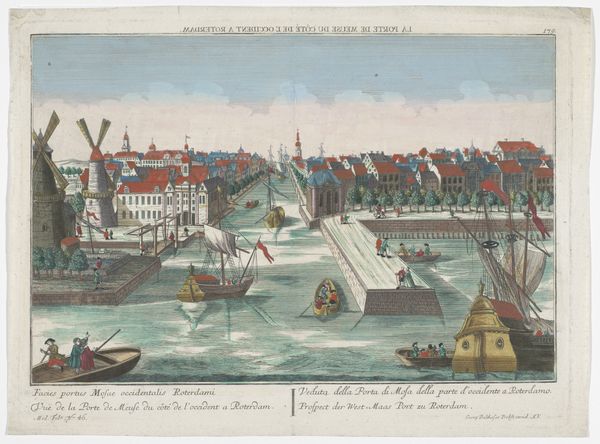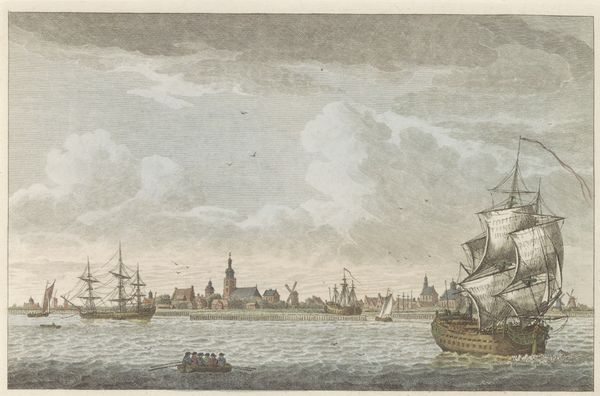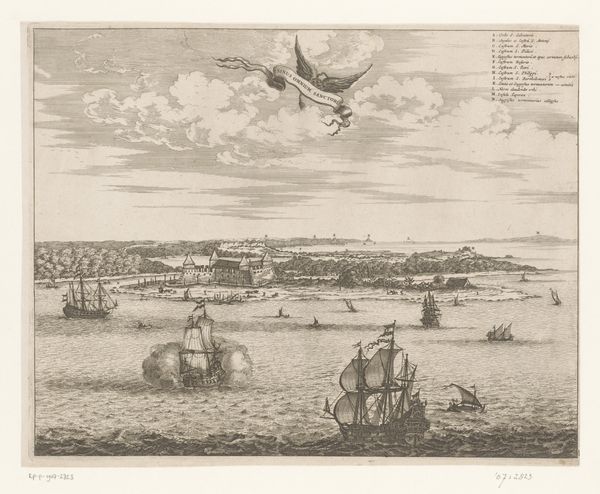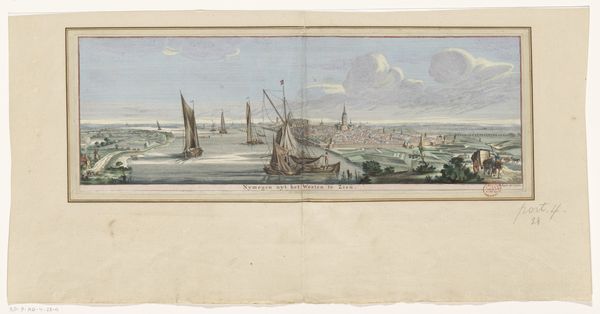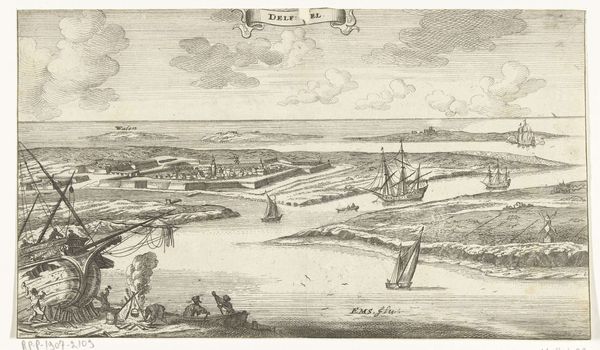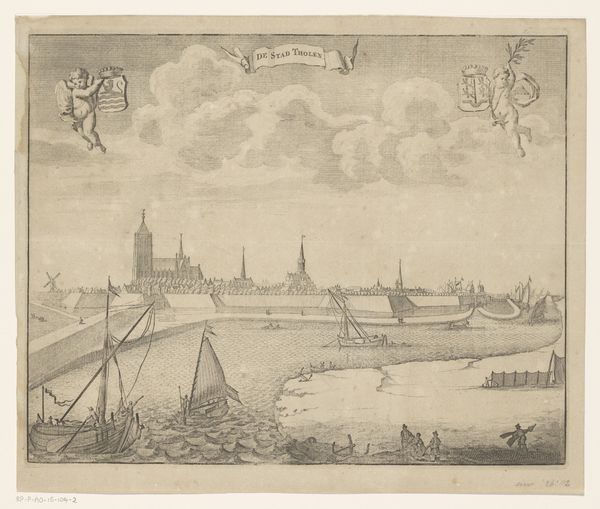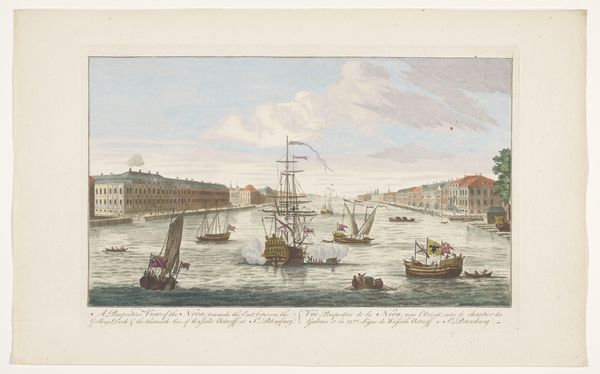
drawing, watercolor
#
drawing
#
water colours
#
baroque
#
landscape
#
watercolor
#
coloured pencil
#
cityscape
Dimensions: height 325 mm, width 495 mm
Copyright: Rijks Museum: Open Domain
Curator: This delicate watercolor is titled "Gezicht op de vestingwerken bij Nijmegen aan de Waal," or "View of the fortifications at Nijmegen on the Waal," attributed to Martinus Berkenboom, dating from around 1700 to 1715. What’s your immediate reaction to it? Editor: It's serene, almost deceptively so, considering it depicts fortifications. The pastel tones and panoramic view soften what must have been a heavily guarded and strategically important location. It feels symbolic more than practical. Curator: Exactly. Fortifications during this period were potent symbols of power and civic pride, weren’t they? Berkenboom captures Nijmegen during a transformative phase. Cities often commissioned these kinds of depictions. Editor: Yes, and there's a subtle duality in the river. Water, life, trade, passage—but here, also a key strategic element in the city’s defenses. See how the boats are almost dwarfed by the river’s width. Curator: Good point. Those river arteries provided vital transport and commerce but also vulnerabilities. Nijmegen endured numerous sieges throughout history. I also want to mention the architectural structure of this drawing with an understanding of social history of Northern Europe Editor: I note the eye is immediately drawn towards the heart of Nijmegen: the central church tower, and that sense of calm I initially felt. Towers, churches, are like cultural anchors offering spiritual bearings and a symbol for the region Curator: It suggests that the citizens of Nijmegen drew not only strength from military preparedness but also from spiritual resolve. These kinds of fortifications served to keep all kind of power at bay to give freedom for thought. Editor: Indeed. There's a sense of resilience, of enduring spirit, embedded within these fortified walls. Even depicted so subtly, they exude the will to prevail. Curator: Well, studying the history behind an image always deepens its resonance. It ceases to be simply aesthetically pleasing and is transformed into a significant emblem of an epoch. Editor: Yes. Images capture both the immediate and the infinite, and reveal those echoes. This picture, like many, helps connect a line to the past that resonates in today's world.
Comments
No comments
Be the first to comment and join the conversation on the ultimate creative platform.
